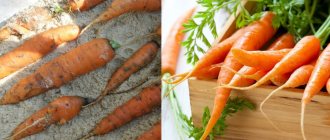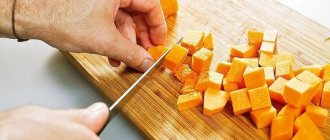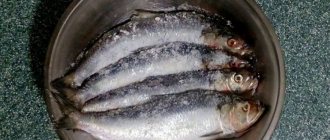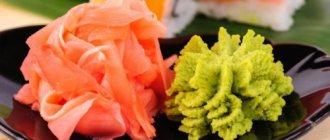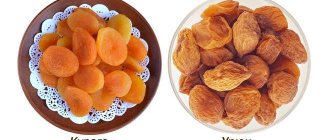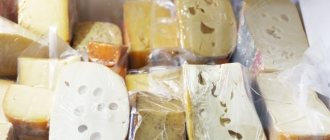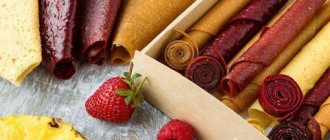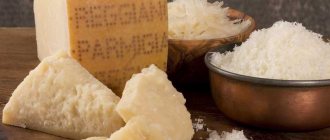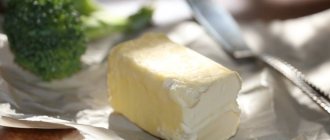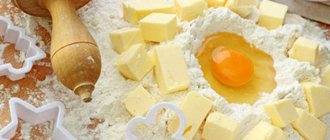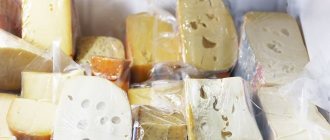The first halva was made in Iran in the 5th century. BC e., and years later they began to make this sweet in other countries of the East and Central Asia. In those distant times, refrigerators did not yet exist. Therefore, halva was stored in the coolest places that were in the house. Nowadays, to keep food cold, there are various possibilities associated with technological progress. Therefore, storing halva at home is now much easier.
History of halva and its varieties
According to historical data, the first recipe appeared in the 5th century BC.
e. on the territory of Iran, where the delicacy was prepared by hand by specially trained people - kandalakchi. Ancient Arab masters generously flavored molasses with honey with chopped nuts and sesame seeds, adding eggs for foaming. To obtain an “airy”, slightly crumbly product, the thick mass was thoroughly mixed and cooled. To make the halvic mix melt in the mouth, it was enriched with the addition of licorice root. Today, eastern masters of Kandalakchi prepare confectionery according to two main recipes:
- from the seeds of various oilseeds;
- from vegetables or fruits, as well as corn flour.
The Slavs became acquainted with Arabic sweets at the dawn of the 19th century; various types were prepared by a Greek culinary specialist from Odessa. It was he who corrected the original recipe, replacing sugar with the addition of honey, which was expensive at that time. According to other sources, the first producer of halva in Russia was a merchant named Sviridov, whose Greek wife revealed the secret of the recipe for the oriental delicacy.
Note: The taste of handmade food can be easily distinguished from its industrial counterpart, although the factory product is also tasty. However, a handmade dessert will last longer in a cold place than a store-bought one.
Homemade halva lasts longer
Types of oriental sweets
Focusing on the traditions of Arab cuisine, it is customary to distinguish three main types of halva - sesame, sunflower, and nut. Modern manufacturers offer a wider range of nutritious products:
- Dry sunflower halva can be recognized by its crumbly structure, moderately sweet taste and light color. The grayish-green mass of the seeds is not bitter and is especially beneficial for the nervous system, digestion, heart and blood vessels.
- The sesame treat, made from whole sesame seeds, is yellowish-gray in color and has a slightly bitter taste. The product is considered a source of antioxidants, protects the vascular system and the musculoskeletal system.
- Tahini is a very rare and expensive product. It is prepared from the inner part of sesame seeds. Sweetness is able to regulate oxygen metabolism in the body, prevents aging, and protects against the effects of stress.
- Peanuts are used to make peanut dessert. The aromatic mass with a creamy tint surprises with its pronounced peanut taste. Thanks to the abundance of vitamins, the halvic mix is useful for strengthening the immune system.
- Nut halva is made from a mixture of various nuts - walnut and almond kernels, cashews, pistachios, hazelnuts. Therefore, the benefits depend on the type of nuts added, and pistachios are useful for increasing sex drive.
The composition of the combined type is replete with a variety of main ingredients, and halva in chocolate began to be produced only recently, but it managed to win the love of the consumer due to its special taste. However, when purchasing a chocolate-coated product, you must take into account the high calorie content.
Varieties of halva in the eastern market
Halva: what is the benefit, is there any harm?
The nutritional value of a product is related to its variety and compliance with storage rules. The most popular sweet in the world contains vitamins (B1, PP, F1 and D), a set of important minerals (potassium, zinc, phosphorus, copper, calcium) and vegetable proteins. Of the polyunsaturated fatty compounds, halva contains linoleic, linolenic and oleic acids, a certain percentage of amino acids and dietary fiber.
Useful qualities
Each type of dessert is useful in its own way; from the total number of useful properties, several main ones can be distinguished:
- high-quality fats (30%) act as an antioxidant - protect against high cholesterol;
- fatty acids are important in the fight against atherosclerosis, complete protein helps restore physical strength;
- dietary fiber activates the functioning of the intestines, and the pistachio variety of sweetness activates the functioning of the liver;
- the presence of a high proportion of tocopherol (vitamin E) protects the health of the woman’s reproductive system;
- the delicacy with peanuts is famous for its antitumor properties; the nut itself is important for improving memory and protecting the nervous system from stress;
- sesame-based halva is rich in vitamin A, which is necessary to strengthen the immune system and visual function;
- Sunflower and sesame desserts are important for the skeletal and muscular systems due to their high calcium and vitamin D content.
Important: The abundance of beneficial properties of the aromatic dessert is associated with the technology of processing its components (seeds, nuts). The grains from which the oriental sweet is prepared are not subjected to heat treatment, completely retaining their beneficial qualities.
How to choose the right one
If you decide to enjoy an oriental sweet, remember that storing halva for a long time is unacceptable. Even inside the refrigerator, a product made with the addition of oilseeds will not last longer than 3 months and will become bitter.
To get maximum benefit, remember the little secrets of proper selection and storage:
- It is safer to take halva sealed in an airtight container; such products can be stored for six months. In a cardboard box, the confectionery product will remain fresh for no longer than 2 months.
- When buying halva by weight in a store or market, ask about the production date and expiration date marked on the box. It would be a good idea to pay attention to the temperature at the point of sale.
- The color and smell of the food mass is used to judge its suitability for consumption. The smell should be rich and correspond to the main component - a certain type of nuts or seeds.
Tip: Avoid buying halva that has a long shelf life or is covered with a layer of greasy film with drops of moisture. A stale or rancid product with an abundance of preservatives risks poisoning. Be sure to try the weighed oriental delicacy before purchasing.
Fresh halva is uniform in color and without greasy spots
How to choose the freshest halva
When buying halva, pay attention to its color and smell. Of all the types of halva, only sunflower halva has a dark gray color. Dessert made from sesame is the lightest. Halva made from nuts has a pleasant beige color, like peanuts, hazelnuts, etc. Halva is sold by weight and packaged in portions in sealed packaging.
Halva smells like what it is made from, with the addition of caramel aroma, and has a sweet, rich taste without any foreign aftertaste. If after tasting you still have a bitter taste or the smell of halva differs from the product from which it is made, this is a sign of a spoiled dessert. When purchasing loose halva, pay attention to the temperature at which it is stored at the point of sale. This product should not be sold from open containers in direct sunlight. In addition, the seller must monitor the place where the halva is stored so that buyers who try the product that has not undergone heat treatment do not have access to the open product.
It is better to buy Turkish tahini or sesame halva in original packaging. The taste of sunflower or nut will also be more pleasant if the product was hermetically packaged. When purchasing a packaged dessert, pay attention to the shelf life of halva indicated by the manufacturer. When selling, it should not be stored in the open sun. And also the temperature should not exceed 20°C or be higher than that specified by the manufacturer.
The shelf life of halva is 6 months from the production date, so when buying packaged, choose the freshest one, and when buying loose, look at the production date indicated on the box.
How to distinguish high-quality halva from low-quality one?
High-quality halva should be dry, have a layered fibrous structure and slightly crumble. If the surface of the product has a dark coating, it means that the product’s shelf life has come to an end. Halva should not be bitter, be too sweet and stick on the teeth. The treat should melt quickly in your mouth. The fact that the halva is of poor quality is indicated by the thickening of the caramel mass: “white vessels”, clearly visible on the cut.
In addition, halva should not contain husks from seeds and nuts; it should consist only of natural ingredients, without antioxidants, dyes, artificial flavors and emulsifiers.
The shelf life of packaged halva is no more than 2 months, in vacuum packaging - up to six months. If drops of fat are noticeable inside the package, it means that either the technological process or the storage conditions of the halva were violated.
It is recommended to store the finished halva in a dry, dark place at a temperature of no more than 18 °C.
How to choose a quality product when purchasing
There are quite a large number of varieties of halva, which must meet their own standards. That is why below we will tell you how to choose a quality product.
The first thing you should look at is the composition of the product. The fact is that for halva to be well preserved, it is not necessary to use dyes, flavors, preservatives, or other artificial additives. All this is added in order to improve the taste, reduce the price, or give it a marketable appearance. There is no benefit from such additives, but there is harm, so the shorter the composition, the healthier the product.
It is advisable to buy halva in transparent packaging so that you can visually assess its condition. If you notice caramel streaks, it means that the manufacturer has added too much caramel, which will increase the calorie content of the product, but you will not feel any additional benefits. Also, such halva has a sickly sweet taste, which many will probably not like.
If you notice drops of fat, it is better not to buy such halva at all, since technological issues were violated during its production.
A problem that is typical for halva by weight: if you notice dark spots on the product, or it seems to be smeared with soot, it means that the sweetness has long expired. This may also indicate that the temperature or humidity level was disturbed during storage. You cannot buy such halva.
It is worth paying attention to the structure of halva. It should be layered, porous, easily removable
The product should not be an oily, dense piece of something unknown that cannot be broken by hand. This indicates that the manufacturer has decided to increase the dose of sugar significantly, which will clearly affect your figure.
Remember that loose sweets can be stored for no more than 2 weeks, given unfavorable conditions. Vacuum packaging allows you to extend the shelf life up to six months, but no more. If you see that the expiration date is a year or even more, then the product is, to put it mildly, unnatural.
Learn more about the benefits and making protein bars at home.
What to consider when purchasing
The main criterion for the freshness of halva is its bright, persistent aroma. In addition, this product must have a crumbly fibrous structure and color corresponding to its grade.
- Halva made from sunflower seeds has a dark, gray color. A sesame product, on the contrary, should be light.
- Nut sweets, for the production of which peanuts, hazelnuts, etc. were used, should be beige and have an appropriate smell.
- In stores and on the market, this sweetness is purchased by weight or already packaged in sealed packaging.
When halva is sold by weight, unpacked, and its release date is unknown, you need to pay attention not only to its aroma, but also to its structure. A dark coating indicates that the halva’s shelf life is already running out, and it is better not to buy it.
How to store halva
We have known this oriental sweetness since early childhood. And its history goes back many centuries. Even now, in the territory of modern Afghanistan and Iran, it is made by hand, and there are extremely many recipes for making it and each type differs in its taste. The minerals, vitamins, and phytosterol contained in halva help get rid of bad cholesterol, sharply lowering its level, which reduces the risk of atherosclerosis and plaque formation in blood vessels.
Golden Age halva (zolotoi-vek.ua) can be sesame, it contains the largest amount of phytosterol, then, in descending order, this valuable plant cholesterol is found in peanut and sunflower.
What is the shelf life of halva? How to store halva?
What is the shelf life of halva?
Modern industrial halva can be stored for a very long time. I just now have Turkish tahini halva - I looked at the expiration dates - right up to September 2021. It clearly contains preservatives.
If we are talking about different varieties of halva made using old-fashioned methods, then the terms here are as follows:
Quoted from here, I advise you to look at the link, because there is a lot of useful information about halva.
What does GOST say? I quote another informative source:
When information from two independent sources overlaps, this is a good sign. This means you don’t have to look for the third one, etc.
When you buy packaged halva (and they sell it in different ways, including in sealed cans), it is best to pay attention to what is indicated on the packaging
specific product. Here I found a photo of the packaging of some peanut halva on the Internet (produced in Ukraine):
I circled the manufacturing date and expiration date in an oval. It turns out that this halva can be stored for six months (6 months).
Halva is an oriental sweet, usually made from nuts or sunflower seeds.
There are several varieties of this delicacy on our market, these are tahini, peanut, sesame, sesame in chocolate, sunflower.
As you know, all these nuts and seeds can go rancid if stored improperly, especially when shelled.
What can we say then about their crushed mass and even with sugar and other organic additives that make up the halva. The oils of these nuts and seeds have the ability to oxidize in light and at high temperatures, go rancid and spoil.
To avoid this, halva manufacturers add preservatives and package it in light-proof, airtight packaging.
The shelf life of the finished product depends on this; it can vary from 1 year to 2 months only. After opening the package, it is better to consume the halva immediately or within several days. Well, if you can’t handle it, then store it in the refrigerator in a closed jar.
This is all, of course, wonderful, but with such traditionally made halva, which is sold by weight, only the seller who opens the package knows the date of production, and he, of course, will not tell us whether he stores it at the correct humidity or shares it with the warehouse rats .
Useful properties of halva
Our most common is sunflower halva. It contains vitamins B, PP, F1. Peanut halva contains a lot of vitamin D and linoleic acid. The most common sesame halva in the countries of the Middle East contains B vitamins, zinc, manganese, calcium, and antioxidants. In general, natural ingredients are used in the production of all types of halva, which is why it is so useful. But you need to know that halva is a high-calorie product, so it should be used as a sweet dessert, since it contains more than 500 Kcal.
What are the benefits of sunflower halva?
For women
The benefit of any product for women lies in the presence of vitamins and beneficial elements that are easily absorbed by the body. Sunflower seed halva has this quality.
- Thus, it contains dietary fiber, which promotes the absorption of food, as well as protein and youth vitamins.
- Due to the fact that halva contains substances that are directly involved in oxidative processes, it helps to achieve healthy and beautiful skin, as well as stimulate the growth of hair and nails. Regular use will promote skin elasticity, hair will become smooth and soft, and nails will stop breaking.
- It can be included in diets. Halva can replace many “harmful” desserts because it is not a source of extra calories.
- Vitamin E, which is sufficient in this dessert, will help cope with difficulties in conceiving. This feature was noticed in ancient times. Then many of the Sultan’s concubines tried to eat as much halva as possible in order to give birth to an heir.
Based on all that has been said, the best “snack” for every woman will be a small piece of halva
It will help improve your appearance, brain activity, attention, and improve your mood.
For men
Speaking about the benefits of halva for men, it is worth noting that it contains potassium, which has a positive effect on the functioning of the human cardiovascular system. It is no secret that after 40 years, many representatives of the stronger sex have a risk of developing heart disease, heart attacks and strokes. By regularly eating halva in moderate quantities, you can significantly reduce the likelihood of these ailments and their consequences.
It also “nourishes” the muscles due to the presence of vitamin D, and vitamin E provides lush hair. In addition, halva is an excellent aphrodisiac, and men who regularly eat this dessert do not have problems with potency.
During pregnancy
Any doctor will tell you that during pregnancy it is necessary to include in your diet as many foods as possible that contain beneficial substances. This is why halva as a dessert will be so useful for expectant mothers due to the presence of many important vitamins, macro- and microelements in it. A special role will be played by folic acid, which is so necessary for the normal development of the unborn child.
However, as with everything, there are some features that should be taken into account:
- You should not eat halva if your mother has an allergic reaction to the products included in its composition.
- It is worth remembering that halva is a fairly high-calorie product, and you cannot eat a lot of it. It should also be alternated with other desserts and not consumed every day.
- In the later stages, you should abstain from halva, as well as from other sweets, as it can cause disruption of the gastrointestinal tract, excess weight gain and bloating.
When breastfeeding
When breastfeeding, foods that are beneficial to the mother's body will have a positive effect on the baby's health. In particular, halva has healing and health-improving properties, and it also increases the energy value of breast milk. However, sunflower seeds contain an allergen, so you should be careful.
Doctors recommend introducing halva in small quantities into the diet during breastfeeding and monitoring the baby’s condition. If allergy symptoms appear, you should stop eating it immediately. It is also worth remembering that the product is quite “heavy” for a child in the first months of life.
Video:
Is it possible for a nursing mother to have sweets?
For children
Halva for children is an excellent treat; it can be given both as a dessert and a snack. There are many opinions about at what age you can give halva to a child: some parents begin to include it in the child’s diet starting from the age of 2, others - much later. However, pediatricians recommend giving it as food starting from 3 years of age.
Benefits of halva for children:
- quite easily digestible;
- contains many useful elements and vitamins;
- increases brain function and alertness;
- restores energy;
- improves the condition of blood vessels and heart function;
- renews cells;
- improves the general condition of skin, hair and teeth;
- improves mood and energizes;
- improves the functioning of the gastrointestinal tract and removes toxins.
How to store a southern delicacy
Despite the fact that the packaged halva mass contains information about the date of its production and composition, it is more convenient to buy loose halva, since you can taste it and also evaluate its condition. You should not buy sweets with a dark coating; their shelf life is coming to an end. A fresh product should be dry, have a layered fibrous structure, and slightly crumble. Next, you will find out at what temperature and where halva can be stored at home.
Where to put it at home
The tasty product, flavored with nuts and honey, can be stored in a cool pantry (not higher than +18 °C) or on the balcony (not lower than +7 °C), in a cellar that is not too damp (70-75% humidity). The main condition for a cool place is protection from sunlight. It is not difficult to store halva in a factory container at room temperature if the packaging remains intact.
After opening the package, immediately transfer the product into a glass container with a lid and refrigerate. You should not place it in a plastic bag or under a hermetically sealed plastic container; the halva will become damp, lose its taste and most of its nutrients.
Where to place it in the refrigerator
An oriental dessert on the shelf of the refrigerator will not lose its taste and beneficial qualities if it is stored for no longer than 2-3 months, but subject to the temperature regime: 7-8 degrees Celsius.
The shelf life of loose delicacies depends on its ingredients:
- for sunflower – 2 months;
- for sesame – 2;
- for peanut – 1.5;
- for nut – 1.5;
- chocolate with additives can be stored 2.
Tip: Do not wrap the halva in paper, the wrapper will become saturated with oil. In film, sweets can become moldy without air access. It is better to put the confectionery product in a glass jar and cover it with a cloth so that the halva does not dry out and does not absorb the odors of other products.
Provide the product with a flow of fresh air so that the halva does not become moldy
How long does halva last in the refrigerator?
The shelf life of loose halva in the refrigerator at a temperature not exceeding 7°C is:
- peanut – 1.5 months;
- nut – 1.5 months;
- sesame – 2 months;
- sunflower – 2 months;
- glazed and with additives – 2 months.
Acceptable shelf life of halva
If you choose a quality product in a sealed package (preferably foil), then it can be stored at room temperature in a kitchen cabinet. On the container with halva, look for the manufacturer, the composition of the product and its shelf life. A properly prepared treat without food colorings and preservatives should not stick to the gums or form a lump in the mouth. When you open the package, the halvicha bar should have smooth edges with no traces of oil.
If factory-made halva can be stored for about six months, then its loose counterpart cannot be stored for a long time - only 2 months. At home, the confectionery product is transferred to a glass container, which is left in a cool place (not warmer than +12 ° C). The shelf life of the dessert is shown in the table below.
| Where to store at home | How long can it be stored, months? |
| In a dark place at room temperature | No more than 2 |
| On the refrigerator shelf | About 3 |
| In the freezer | Maximum 3-4 |
Those with a sweet tooth can successfully enjoy halva instead of chocolate, because the buttery oriental delicacy is much healthier. In addition, research by scientists has proven that the sweet mass of sunflower seeds is rich in active substances that can prevent and inhibit the growth of tumors of the intestines, lungs, and female genital organs.
Note: If the halva was stored in the cold, before serving, the dessert should be left for some time at room temperature so that it warms up. Cold halva is not consumed.
Storing halva at room temperature
Halva is a rather satisfying dessert, so the question of how to store halva at home is very relevant.
Halva and how to store it at home.
A good housewife should know many useful things: how to make a twist for the winter, and how to cook meat in French, and how to use sour milk so as not to throw it away. And for those who love sweets in the family, it will also be useful to learn how to store halva, which is an almost natural delicacy that has many beneficial properties; they do not disappear only if it is stored correctly.
If you have bought a well-known oriental sweet for tea, then you need to know what its expiration date should be and what places are suitable to store halva at home without losing its taste and beneficial properties. First of all, you need to know that this delicacy, like many others, is afraid of moisture. It should be excluded if you intend to properly store halva.
When purchasing a packaged product, you can determine its shelf life by the date on the briquette, but if you purchased halva in bulk, then it is better not to leave it for longer than two months. Instead of storing halva for longer, you should buy it in small pieces so that it does not have time to stale. If you do not plan to keep the delicacy for a long time, it is enough to store the halva in a vase, covering it with a napkin so that it does not become weathered and dust does not fall on it.
Halva should be stored in any quantity in a room where the temperature does not fluctuate, exceeding +18 degrees Celsius. If you are sure that you bought the product fresh, you can safely set aside two months for safe storage of sweets. Since the oriental delicacy requires a relatively cool place, it is better to store halva in the refrigerator. This is the best place where it will be protected from sunlight and temperature changes. If the halva does not have packaging, then it is recommended to cover it with a thin cloth, then it will not dry out.
In addition to the fact that you need to store halva in the refrigerator and without plastic wrap, it is good to place it in a glass jar. The container with the lid closed can be stored outside the refrigerator, but in a dark, dry place. It should be noted that if halva is stored correctly, then beneficial phytosterol molecules will enter the body along with it, which will remove harmful cholesterol from the body, which is why this sweetness is considered so healthy.
You cannot store halva in a plastic bag, in which moisture can easily form, which is detrimental to the delicacy. Damp halva not only becomes of an unpleasant consistency and taste, but there are no useful substances left in such a product. In addition, under such storage conditions, the taste may change so that in principle it cannot be eaten.
Cold storage
A refrigerator with a temperature regime not exceeding +7°C is considered a good place to store this dessert. In such conditions, halva can be stored for the entire time until the expiration date.
Due to its structure, this product quickly absorbs environmental odors. Therefore, it is not advisable to store it simply wrapped in paper, but it is better to store it in the following containers:
- sealed bags without air access;
- glass, tightly closed containers;
- closed food containers made of plastic.
This product should not be kept open or in plastic bags. Factory-packed sweets can be stored if the packaging has not been damaged.
Frozen
Only sesame halva can be frozen. It will not have a bitter taste after defrosting, like nuts or sunflower seeds.
- The sweetness is hermetically packaged, after which, using the quick freezing function, a dessert ready for long-term storage is obtained.
- You need to store halva in the freezer at -18C° (and below) for about 3 – 5 months.
- You need to defrost gradually - without unpacking. First, move the sweets to the top shelf of the refrigerator for several hours. And only then at room temperature.
Much has been said about the beneficial properties of this confectionery product, but in order to always enjoy fresh sweetness, you need to store halva correctly and not exceed the shelf life specified by the manufacturer.
Shelf life of halva
- Shelf life: 6 months
- Shelf life: 6 months
- Shelf life in the refrigerator: 2 months
- Freezer life: 3 months
Storage conditions:
Store at a temperature not exceeding +15 °C
This oriental sweet is well known to many for its excellent taste. As it turns out, there are a large number of types of halva, as well as recipes for making it. Nowadays, halva is made by hand only in Iran, Turkey and Afghanistan. Its taste is much different. The halva produced in industrial production is tasty, but very different from the one made by hand. It is also of low quality, it dries quickly and releases grease. Therefore, in order to eat a fresh product, it is worth knowing the shelf life of halva. This delicacy was loved many centuries ago, but even now it is loved by both children and adults. This is a wonderful dessert that is also a healthy sweet.
Halva begins its history in Iran in the 5th century BC. Its appearance in the countries of the USSR is still unknown. There are opinions that this product appeared in Odessa. It was produced by the Greek confectioner Kazi. A variety of types of halva were produced at his factory, from chocolate to nut. There is also a version that the merchant Sviridov, who learned the recipe from his Greek wife Medea, learned the recipe for halva. Only a few types of halva are currently produced in Russia. The recipe for this sweet is actually very easy. Nuts or seeds need to be crushed and then beaten with caramel into a homogeneous fluffy mass. The soap or licorice root makes the halva melt in your mouth. They are added to the syrup for this purpose. Halva contains natural ingredients, so it is considered a healthy product.
Is it possible to freeze halva
To preserve the taste of the product for a long time, it can be frozen. Halva is no exception, but to store this dessert in the freezer the following requirements apply:
- You can only freeze tahini or sesame halva, they do not taste bitter after defrosting;
- when freezing, the dessert must be packaged airtight, without air entering;
- freezing should be quick, at a temperature of -18°C and below;
- You can store halva in this form for no longer than 3 months.
Halva should be defrosted in its packaging on the refrigerator shelf.
How to store halva in the freezer
Only tahini halva should be frozen. This product will not acquire a bitter taste after defrosting.
Rules for selling frozen halva:
- the product must be prepared for freezing and hermetically packaged;
- freezing is carried out at -18 degrees and below;
- The shelf life of halva in the freezer is 3 months;
- You need to defrost the dessert in stages: first move it unpacked to the top shelf of the refrigerator for a couple of hours, then keep it at room temperature for some time and only then serve it.
When storing halva in any household conditions, do not forget about the expiration date of a particular type of delicacy specified by the manufacturer.
Useful properties and composition of halva
Halva is one of the popular sweets all over the world today. Therefore, its composition has been well studied. Of course, it depends on the type of specific halva. But it still has general nutritional values.
First of all, halva is a rich source of vitamins and microelements that are beneficial to the human body and has high nutritional value.
Any type of halva contains vegetable proteins, polyunsaturated fatty acids of plant origin, which are mostly represented by linolenic, linoleic, oleic and others, amino acids, and dietary fiber.
Important minerals such as potassium, calcium, phosphorus, zinc, and copper are present.
The beneficial properties of halva are very easy to explain: when processed, the seeds and nuts from which this tasty product is made do not lose their properties.
The folates that are present in it are very useful for pregnant women and children, they help the fetus to develop normally and are involved in the formation of a healthy child’s body. If you are concerned about the question “Is it possible to eat halva during pregnancy?”, then the answer is yes. It is possible, only within reasonable limits. It is still a high-calorie product.
Halva is also useful during breastfeeding. You need to introduce it into your diet gradually so as not to cause allergies in your baby.
Halva is useful for the prevention of anemia, as it contains substances involved in hematopoiesis.
Eating halva can be a good prevention of cardiovascular diseases. Thanks to the vitamins and minerals included in the product, it helps strengthen the immune system.
Storing halva without refrigeration
Usually this dessert is not eaten immediately, and many housewives are interested in how to store halva at home without a refrigerator.
Sweets in factory packaging are stored only for the time indicated by the manufacturer on the packaging. After the expiration date, no one can be sure of the quality of the product. Storage usually takes place in cool places: in pantries, on balconies, and not too damp cellars. The optimal storage temperature for halva is +7°C -+12°C.
After the packaging has already been opened, storage of this sweet must be continued in another sealed container. Note! Do not allow the sweetness to be exposed to direct sunlight. It is better to choose packaging that does not allow light to pass through.
The sweetness is placed in a glass or food-grade plastic container, tightly closed, and stored in a dark place at +12°C (not higher). Halva should be stored at a relative humidity of no higher than 75%.
At room temperature, the shelf life of halva is 2 – 3 months.
Types of halva
Halva comes in different types. Here are the main ones:
- from sesame seeds (tahini);
- sunflower seeds;
- from nuts (peanuts, etc.)
Sunflower seeds, like nuts, tend to become bitter, especially when they are not in the shell. They are present in halva in a crushed state. Therefore, they can deteriorate even faster due to oxidative processes associated with the interaction of vegetable oils with light and warm air.
The manufacturer increases the shelf life of halva by adding various preservatives and sealed packaging that does not allow light to pass through.
How long this dessert will remain fresh depends on the amount of preservatives and storage method. But on average, halva can remain suitable for consumption from 2 months to 2 years.
Marking according to GOST
On the issue of marking applied to the packaging of halva, the current GOST 6502-2014 dated 01/01/2016 refers to the Technical Regulations of the Customs Union TR CU 022/2011 dated 12/09/2011. In accordance with Art. 4 of this document, the labeling of any food product, including halva, must, among other things, contain information about the date of its production and its expiration date. Such marking must be indicated on the packaging (briquette, metal can, box) of the confectionery product.
Labeling of halva, which will be sent to the Far North, is carried out in accordance with GOST 15846-2002 dated 01/01/2004.
What determines the shelf life of a product?
The amount of time during which halva can be consumed depends on various factors:
- the presence of various additives and preservatives;
- type of packaging;
- storage conditions.
So, subject to storage conditions, depending on the type of confectionery product, its shelf life is:
- for sesame and glazed – two months;
- for sunflower, nut, peanut or combined – one and a half months;
- if processed in a vacuum and packaged in cardboard boxes – one and a half months;
- if processed in a vacuum and packaged in metal cans and boxes – two months.
Sunflower
Thus, the time during which sunflower halva can be eaten is one and a half months if it is loose (that is, it was initially packaged by the manufacturer in cardboard boxes), and two months if it is stored in industrial packaging.
Peanut
For peanut halva, these terms coincide with sunflower halva:
- one and a half months – for loose products;
- two months – for confectionery products in industrial packaging.
How to determine freshness when buying in bulk?
When buying loose halva, you need to very carefully evaluate the factors indicating the freshness of the confectionery product . These include:
- Lasting, pleasant, bright aroma. The smell of the confectionery product should be similar to the aroma of the product from which the halva is made (peanuts, sunflower seeds, nuts), with a slight hint of caramel.
- Color. This delicacy can be of different colors depending on what it is made of: peanut and nut – beige, sunflower – gray, sesame – light.
- Structure of a confectionery product. It should be uniform, without plaque or any inclusions.
- Clear cut.
- Pleasant taste.
What and what factors influence shelf life/storage?
Halva can be bought by weight or in packaging . In the latter case, it is more difficult to check the appearance, which is often hidden behind labels and stickers, but such a product will be stored longer without opening the container. However, you should carefully inspect the delicacy - there should be no drops of fat under the packaging, indicating a violation of the production technology.
In addition, a quality product must:
- Have a layered fibrous structure (in some cases porous), slightly crumble.
- Have a smooth, non-stick surface.
- Do not contain foreign inclusions or white caramel veins (with the exception of sunflower halva, in which small particles of husk are allowed).
- Have a characteristic color and taste - high-quality halva should not be cloying and stick to the teeth.
| Name of halva | Color (GOST 6502 – 2014) |
| peanut | yellowish to creamy |
| sesame | |
| nutty | light yellow |
| sunflower | grey |
| combined | combination of colors depending on the original products |
| chocolate | brown with shades |
You need to purchase dessert only from trusted manufacturers - under no circumstances should you buy it at market stalls, where halva lies unpackaged in the open air under the sun and in the presence of insects.
How to store at home?
This confectionery product absorbs foreign odors very well , so it is important to store it in airtight packaging. For this purpose you can use:
- bags intended for storing food products;
- glass resealable containers;
- food plastic containers.
- It is best to store halva in the refrigerator when the temperature does not exceed seven degrees. In this case, the product can be stored throughout its shelf life.
- If it is not possible to place this delicacy in the refrigerator, then it must be placed in an airtight container and put in a place where the temperature does not exceed twelve degrees and the humidity does not exceed seventy-five percent. The halva should not be exposed to direct sunlight.
- Only halva made from sesame seeds can be placed in the freezer. Unlike sunflower or walnut, sesame will not have a bitter taste after defrosting. When freezing, the following rules must be observed:
- First, place the product in a sealed package.
- Then it is better to use the quick freeze function (if it has one).
- The temperature should be below eighteen degrees.
- You need to defrost the product gradually: first you need to transfer it from the freezer to the refrigerator, and after a while - to room temperature.
Even non-perishable confectionery products have expiration and storage dates. Cookies, churchkhela, chocolate, marshmallows, marshmallows, cakes and pastries are no exception. Read about expiration dates and factors affecting the safety of such products on our Internet portal.
How long can halva be stored in the refrigerator?
How long can halva be stored in the refrigerator?
The correct way to store halva is this: after purchasing it, if it is loose, transfer it to a glass jar or glass container and place it on a shelf in the refrigerator; the storage temperature should be from 6 to 8 degrees.
Under such conditions, halva can be stored for two months. If you bought packaged halva in a tub, then you can store it in the refrigerator, but it is advisable to transfer it to a glass container. If it is in a paper wrapper, then you need to empty it and transfer it to an appropriate container.
First you need to buy halva correctly - make sure that it does not “melt” or darken. These are signs that it has not been stored correctly or is past its expiration date.
You can store halva at home in different ways. You can store it in the refrigerator at a temperature of two to eight degrees above zero for two months. In this case, tightly sealed containers should be used.
Halva can be stored in the freezer for three months.
Can be stored outside the refrigerator at a temperature no higher than fifteen degrees above zero, the maximum shelf life is six months. So it is stored in boxes in warehouses (at least it should).
Remember that halva strongly absorbs foreign odors, which affects its taste. Therefore, store it in a tightly sealed container.
Halva can be stored for up to 3 months in the refrigerator. And if you take it out of the refrigerator for tea, try not to keep it warm for a long time. Immediately after drinking tea, put the halva back in the refrigerator and then it will not spoil and can be served many times as a dessert for tea.
I never thought about the question of how many days you can store halva in the refrigerator, because such a question never arose. Everyone here loves halva, and even if we bought 1 or 2 kilograms, I store it at room temperature. I usually buy so much halva during the period when we observe Lent. Halva is a sweet, nutritious product that can be eaten during fasting. So to the question, it turns out that halva can be stored in the refrigerator. Store halva in the refrigerator for up to two or even three months on the bottom shelf at 6 - 8 degrees, preferably in a glass container. But personally, it seems to me that rather than storing it for 2 - 3 months in the refrigerator, it is better to buy it fresh.
Can I use it after expiration?
As mentioned above, halva is included in the list of products that cannot be used for their intended purpose after the expiration date. Therefore, you cannot eat expired treats; it is dangerous for human health.
The time during which you can eat halva is limited and depends on a number of conditions:
- compliance with storage rules;
- composition of the confectionery product;
- its packaging.
Carefully monitor compliance with this deadline and remember that expired treats cannot be eaten.
Useful properties of halva
Our most common is sunflower halva. It contains vitamins B, PP, F1. Peanut halva contains a lot of vitamin D and linoleic acid. The most common sesame halva in the countries of the Middle East contains B vitamins, zinc, manganese, calcium, and antioxidants. In general, natural ingredients are used in the production of all types of halva, which is why it is so useful. But you need to know that halva is a high-calorie product, so it should be used as a sweet dessert, since it contains more than 500 Kcal.
The benefits and harms of halva
Depending on its type, this sweetness has its own benefits. Therefore, it is important to know the shelf life of halva. Sunflower halva is one of the most common in Europe and Russia. It contains vitamins B1, PP and F1. Thanks to them, the condition of the hair and scalp improves, and their loss is also prevented. Halva protects the skin from free radicals and helps against aging. In terms of low calories, almond halva is in first place. It is low in oils and high in amino acids. It has a special and memorable taste. Those who want to strengthen their bones should consume it, as it contains a lot of vitamin D. Peanut halva can improve memory, calm the nerves and strengthen the neural connections of the brain. It contains vitamins and linoleic acid. Sesame halva will give you the taste of the East. All traditional Middle Eastern desserts are made using spiced sesame seeds. B vitamins, antioxidants, zinc, calcium, manganese are included in its composition. It is an excellent remedy for migraines, loss of energy and colds. Folic acid is included in almost all types of this product, so those who are planning a pregnancy should know the shelf life of halva.
This sweetness should not be eaten if you have cholecystitis, liver diseases and pancreatitis. It is also contraindicated for obese people.
Harm of halva
Along with the beneficial properties of this product, you should also pay attention to the harm. It can only be harmful if it is abused or if there are contraindications to its components, and also, of course, if it is of poor quality or missing
Due to its increased sweetness, halva can be harmful:
- patients with diabetes mellitus;
- obese;
- patients prone to allergic reactions;
- patients suffering from diseases of the digestive tract (including liver and pancreatitis);
- people with contraindications to eating seeds and nuts;
- patients who cannot tolerate this product.
In case of pancreatitis, liver diseases and cholecystitis, the harm of halva is that it is difficult for the stomach, the full functioning of which is already impaired due to the disease.
Another disadvantage of eating halva is its high calorie content. 100 g of product contains 500-700 kcal. This is a lot, because... The optimal beneficial dose for human health is 20-30 g of a sweet product, which does not harm the body.
Another harm of this product lies in the poor quality of the base. Laboratory studies conducted at the University of California have shown that plant seeds (especially sunflower seeds) can accumulate cadmium over time. It follows from this that stale, stale halva can lead to intoxication.
Some manufacturers use various sweeteners containing GMOs when producing halva, so you should be careful when choosing this delicacy. Also today, it is becoming increasingly popular for manufacturers to add various emulsifiers and dyes to improve taste and increase product sales time.
Another disadvantage of eating halva is that it is a strong allergen. Ideally, it should be eaten separately on an incomplete stomach, but not on an empty stomach, for example, like a melon, so that it is quickly absorbed by the body. Under no circumstances should you consume halva with chocolate, meat, cheeses, or dairy products, so as not to overload the body and harm your health.
Remember, you should not buy halva from hand or in markets because of its low quality. Also, do not forget that if storage conditions are not observed, mold can quickly form in halva (especially peanut and sunflower halva), which is hazardous to health.
How much halva can you eat per day?
It’s quite difficult to name the exact norm, but you should understand that the product is not only high-calorie, but also quite fatty, so you definitely shouldn’t get carried away with it.
When answering the question whether you can gain weight from halva, you should take into account not healthy fats, but fast carbohydrates, which are also found in baked goods
The high energy value is also important, so yes, you can gain weight if you eat a large amount of the product daily. The calorie content of a person's daily diet should be approximately 2500 kcal
This is the total calorie content of foods consumed during the day. Now let’s take the calorie content of halva and think about how much of it you can eat without gaining weight. Roughly speaking, half a kilo of halva gives us a daily caloric value, that is, 2500 kcal - accordingly, if you eat such an amount of sweetness, then you cannot eat anything else during the day. Although it is more likely that you will simply vomit from such an amount of a very sweet and quite fatty product. And if you have problems with sugar, you will have to inject a “horse” dose of insulin
The calorie content of a person's daily diet should be approximately 2500 kcal. This is the total calorie content of foods consumed during the day. Now let’s take the calorie content of halva and think about how much of it you can eat without gaining weight. Roughly speaking, half a kilo of halva gives us a daily caloric value, that is, 2500 kcal - accordingly, if you eat such an amount of sweetness, then you cannot eat anything else during the day. Although it is more likely that you will simply vomit from such an amount of a very sweet and quite fatty product. And if you have problems with sugar, you will have to inject a “horse” dose of insulin.
To make it easier, we divide the above daily calorie content into 3 meals. Although we do not consume the same amount of calories throughout the day, such division will help formulate an acceptable dose of halva. We get about 830 kcal. Now it’s worth considering that halva is a dessert - accordingly, about a third of the calorie content of one meal is allocated to it. As a result, it turns out that you can eat about 50 g of the product at a time, without fear for your figure and general condition of the body.
Harmful properties
Abuse of halva, like any other product, can harm the body. For an adult, the approximate amount of halva per serving is 30 grams. The product is not recommended to be consumed on an empty stomach.
Halva should not be eaten if you have chronic diseases of the liver and gallbladder, obesity, or allergies to the product and its components. For children under 6 years old, halva can harm the gastric mucosa, and little gourmets may choke on crumbs. Like any sweet, halva has an adverse effect on tooth enamel, so after eating it it would be good to brush your teeth and/or rinse your mouth.
Sources
- https://home-gid.com/hranenie/kak-hranit-halvu.html
- https://dostavka-tlt.ru/pishchevye-produkty/srok-godnosti-halvy-v-upakovke.html
- https://kakxranit.ru/produkti/kak-xranit-xalvu.html
- https://mir-espresso.ru/hranenie-produktov/kak-hranit-halvu-v-domashnih
- https://kak-hranit.ru/kak-hranit-halvu/
- https://mir-espresso.ru/sad-i-ogorod/kak-hranit-halvu-doma-iv-chem
- https://pravilnohranuedy.ru/konservatsiya/kak-hranit-halvu-v-domashnih-usloviyah-2
- https://zaokotak.ru/produkty/hraneniya-halvy.html/
- https://ArcheryRing.ru/produkty/kak-hranit-halvu.html
- https://pravo.guru/zzp/torgovlya-i-tovary/sroki-godnosti-i-hraneniya/pishhevoj-produktsii/konditerskih/halvy.html
- https://PolzaVsVred.ru/produkty-hranenie/srok-godnosti-halvy.html
